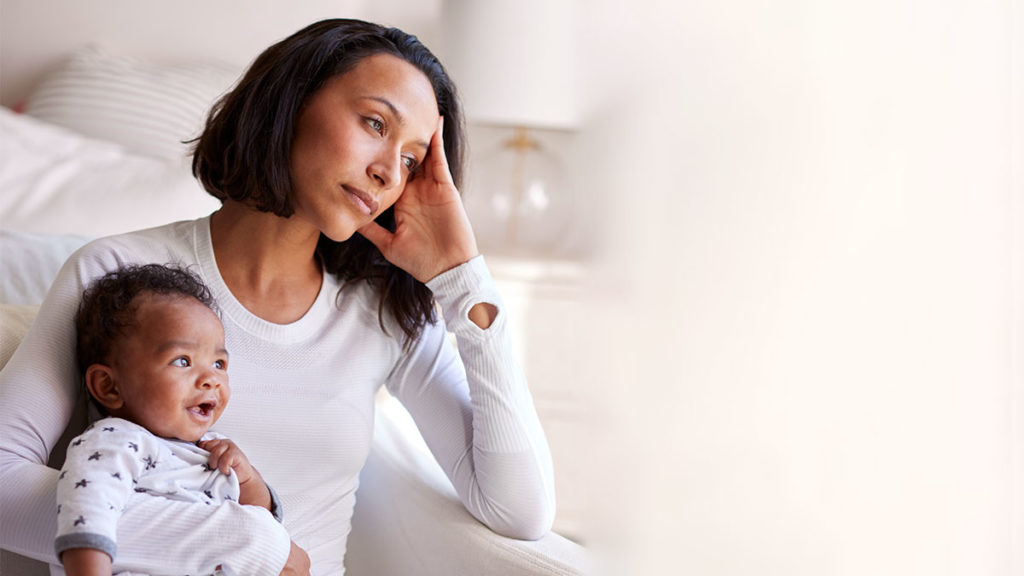
Bringing home a new baby is a joyful event. As a parent, you’re prepared for the flood of unconditional love, even the sleepless nights and avalanche of toys. What you may not have prepared for is the anxiety and depression that can come after birth. It may start as the “baby blues,” a common condition whereby new mothers feel overcome with emotions such as worry, disappointment, and sadness.
For some mothers, the baby blues fade away after a few weeks. But what happens when the blues just won’t go away or get even worse? According to the Centers for Disease Control and Prevention, up to 20% of new parents experience postpartum depression (PPD) or postpartum anxiety (PPA). Teresa Tan, MD, an obstetrician/gynecologist at Stanford Children’s Health, explains the symptoms of PPD and PPA, along with some ways that new moms can find the support they need.
“There’s mom anxiety, there’s new-parent anxiety—there are a lot of anxieties that can come up in the postpartum period. So, what is popularly described as postpartum anxiety is a generalized anxiety that occurs within that first few weeks up to the first year after the baby is born,” she says.
Physicians like Dr. Tan screen all their pregnant patients before and after the baby is born for signs of PPD. Most of the screening is done within the first three months after birth, but some studies have shown that the effects can last as long as three years after giving birth. “Postpartum depression is in the most current psychiatric manual as a subset of major depression. And it’s specifically patients who meet a criteria of major depressive disorder in that first year after delivery, and especially if it’s related to delivery issues.”
While the symptoms vary, some common signs are:
- Sadness
- Anxiety
- Hopelessness
- Fatigue or exhaustion
- Poor concentration
- Confusion
- A fear of harming the newborn or yourself
- Mood swings with exaggerated highs, lows, or both
- Lower sex drive (libido)
- Feelings of guilt
- Low self-esteem
- Uncontrolled crying and with no known cause
- Overconcern for or overattentiveness of the newborn, or a lack of interest in the newborn
- Appetite changes
- Sleep disturbances
- Resentment
- Memory loss
- Feelings of isolation
If any of these symptoms last more than two weeks, or if they start to negatively affect daily life, Dr. Tan recommends seeking help from a health care professional. Anyone who is thinking about harming herself or others should seek immediate medical attention.
Getting help from a trained therapist also can be beneficial for people dealing with PPD or PPA. While talking about it in a safe space can help many parents, sometimes the symptoms merit a prescription drug.
“Many people are concerned about taking psychiatric medications during breastfeeding—they worry, ‘Does it affect the baby?’ The answer is yes, it does cross into the breast milk—but just a little bit,” assures Dr. Tan. “So we really are weighing the risks and benefits. We want a healthy mom because a healthy mom means a healthy baby. We want moms to be able to take care of their children in the best way possible, and sometimes medication is what’s needed to really calm those anxious thoughts down or help somebody get out of a real depressive episode.”
In addition to medical help, reaching out to family, friends, and other new parents can provide the social support to help get through those first few months.
“Finding a good support system is really important for new moms,” Dr. Tan says. “When there’s not a strong support system, there’s a higher risk of depression and anxiety.”
Many communities offer support groups where new parents can connect and share their parenting experiences. It’s a great opportunity to share and learn with other people who are in the same boat. While the pandemic has limited parents’ ability to join these groups in person, Stanford Children’s Health has a free online support group for parents of babies up to 10 months old.